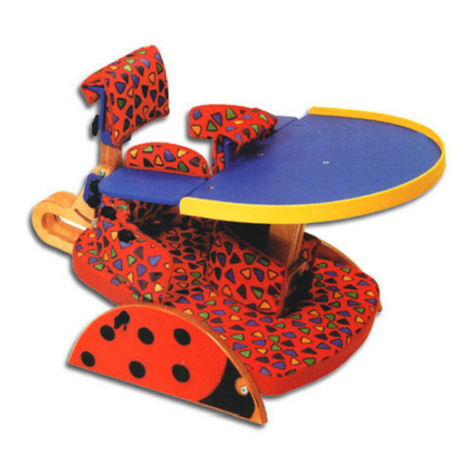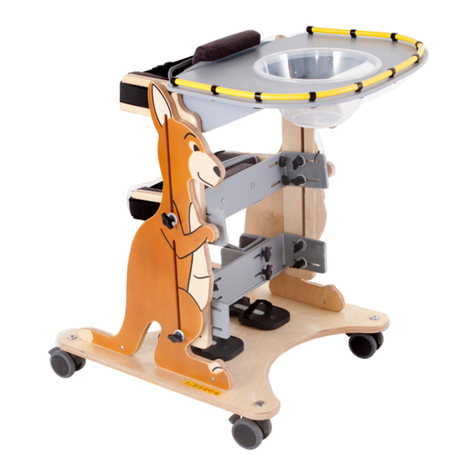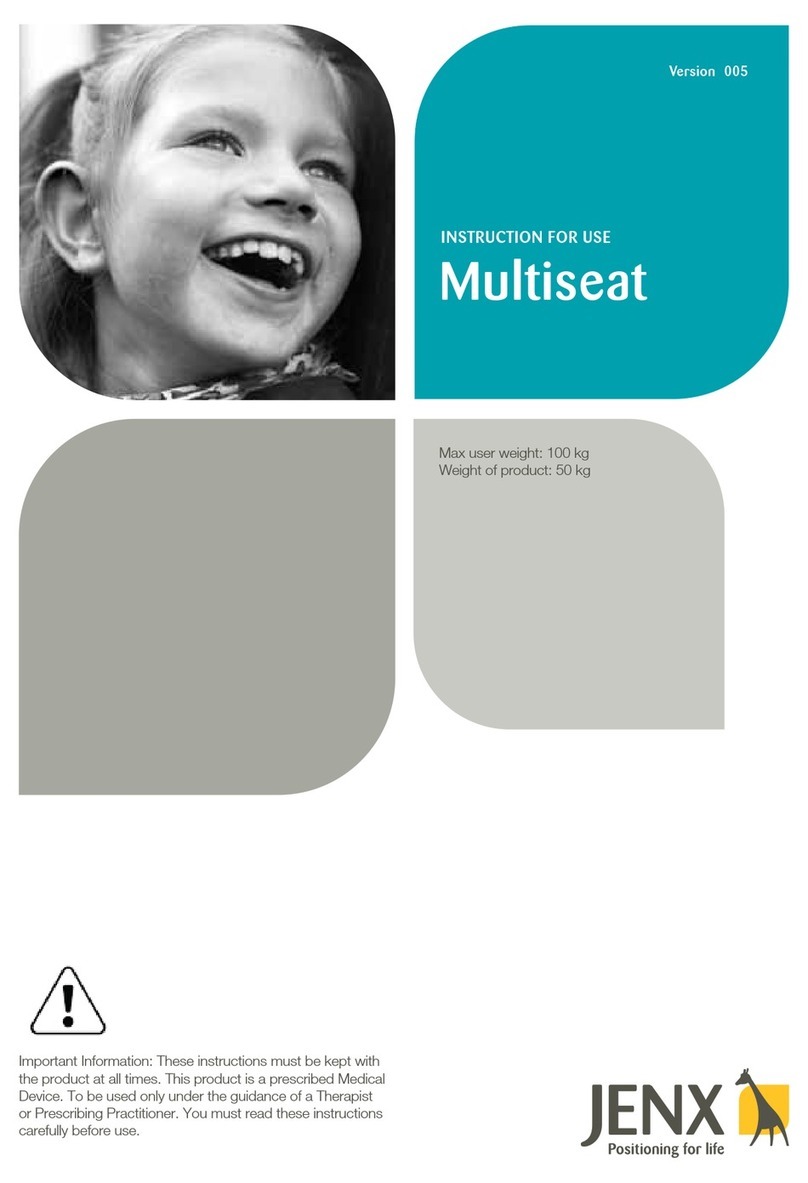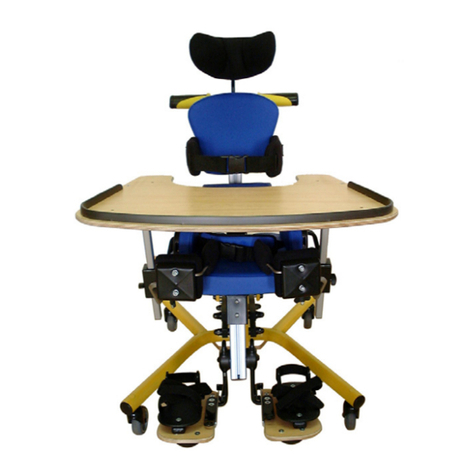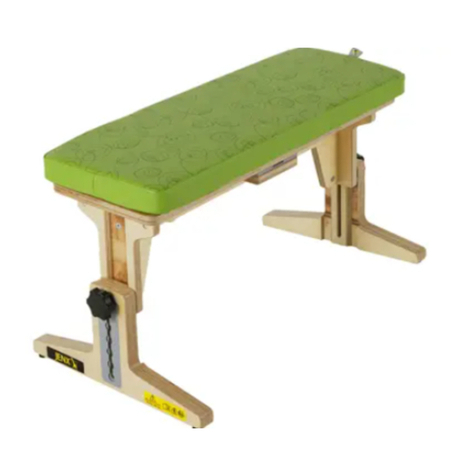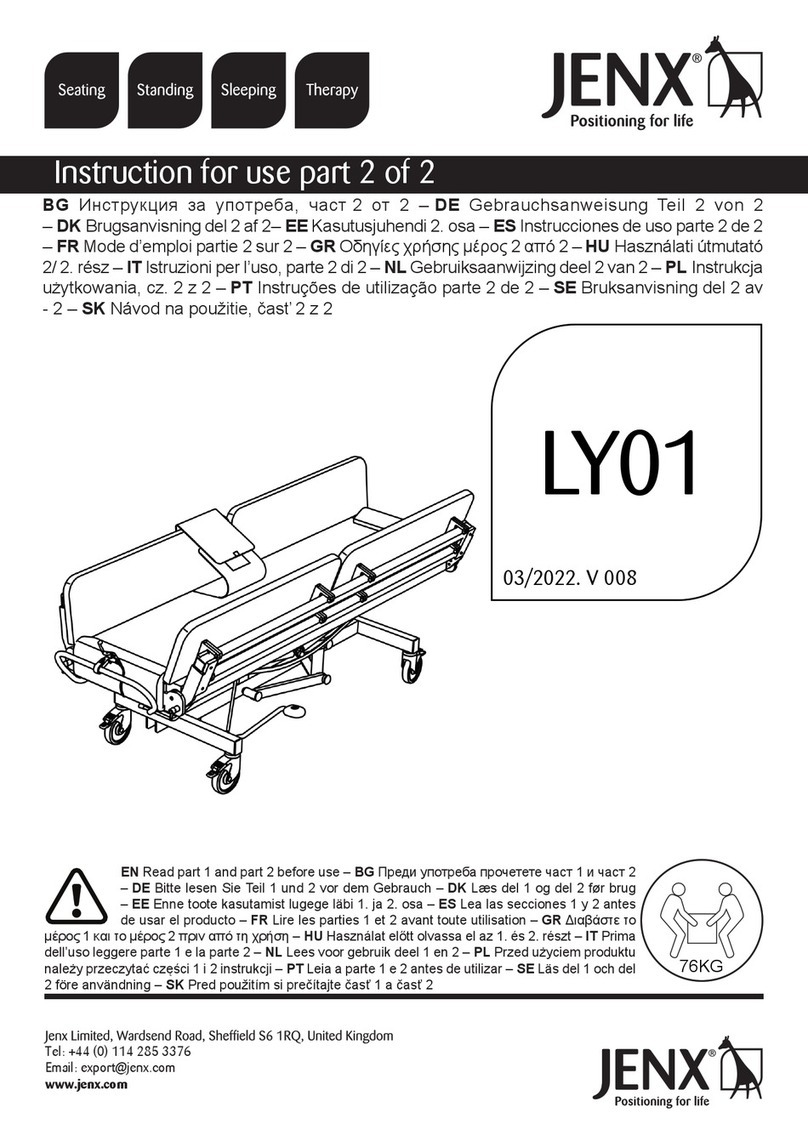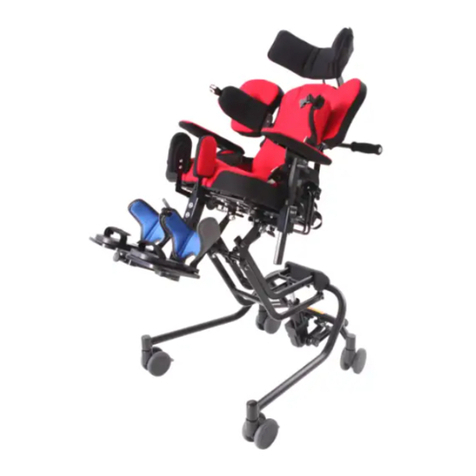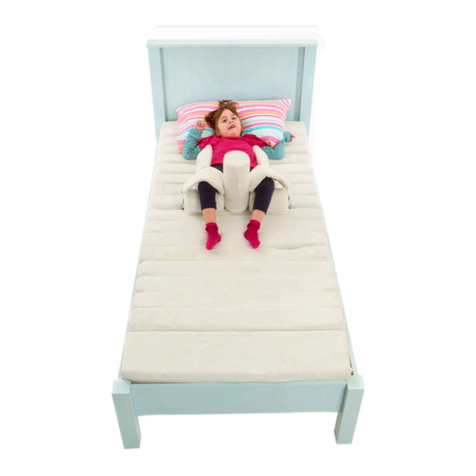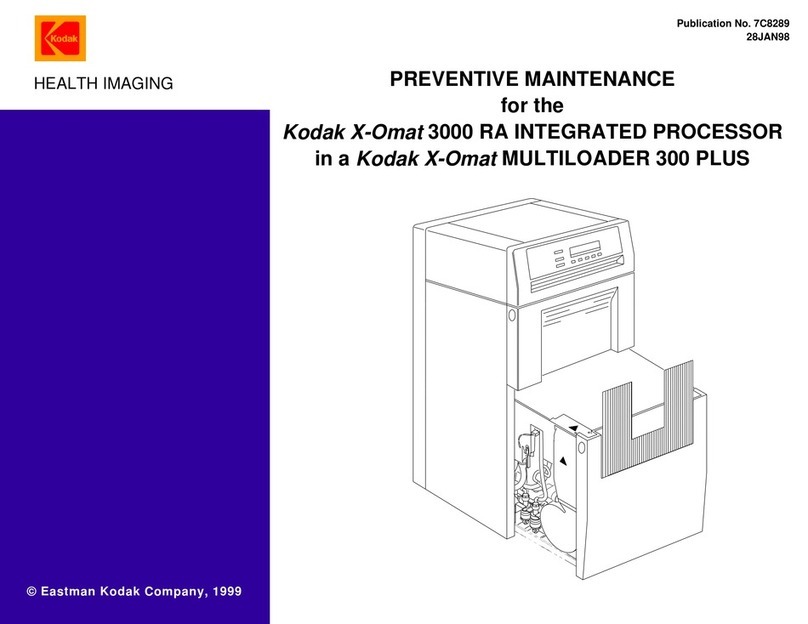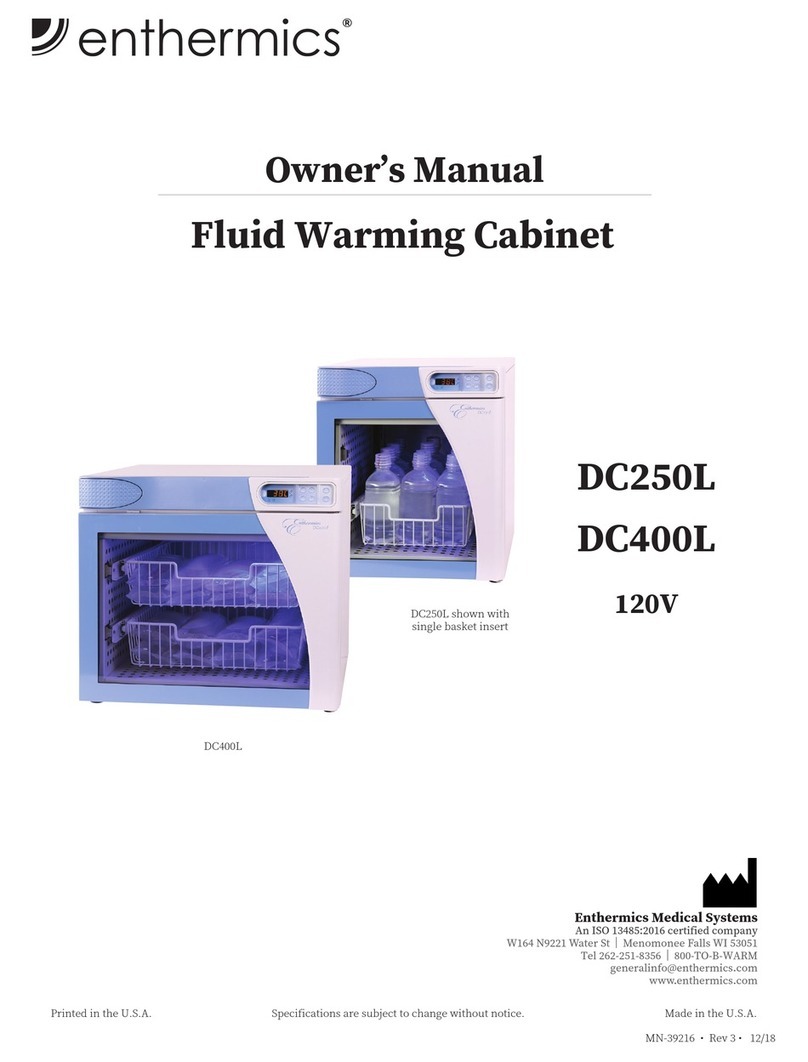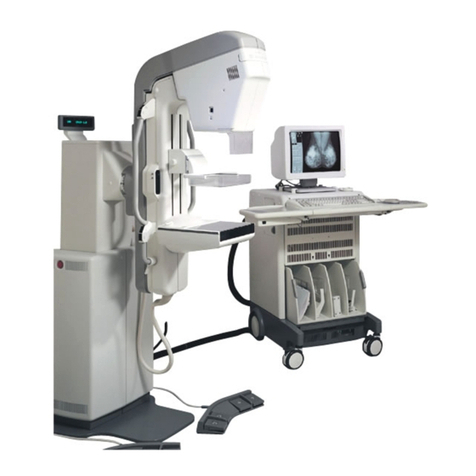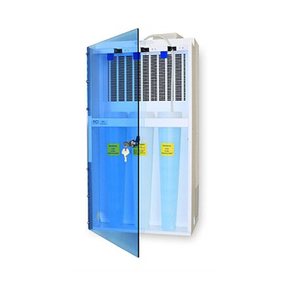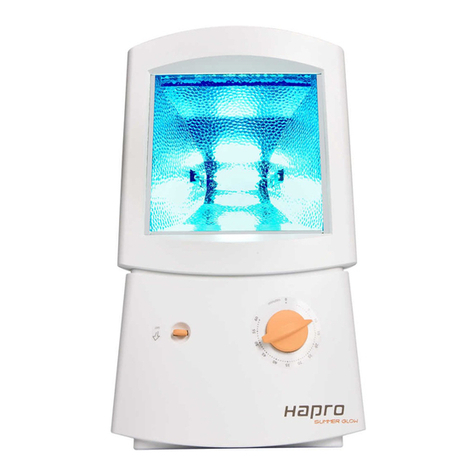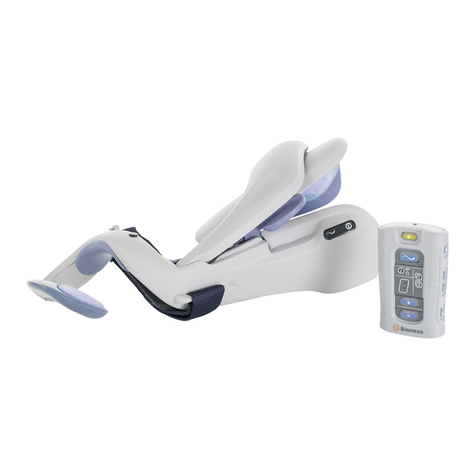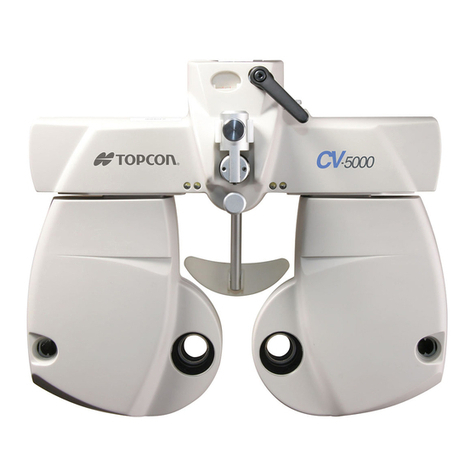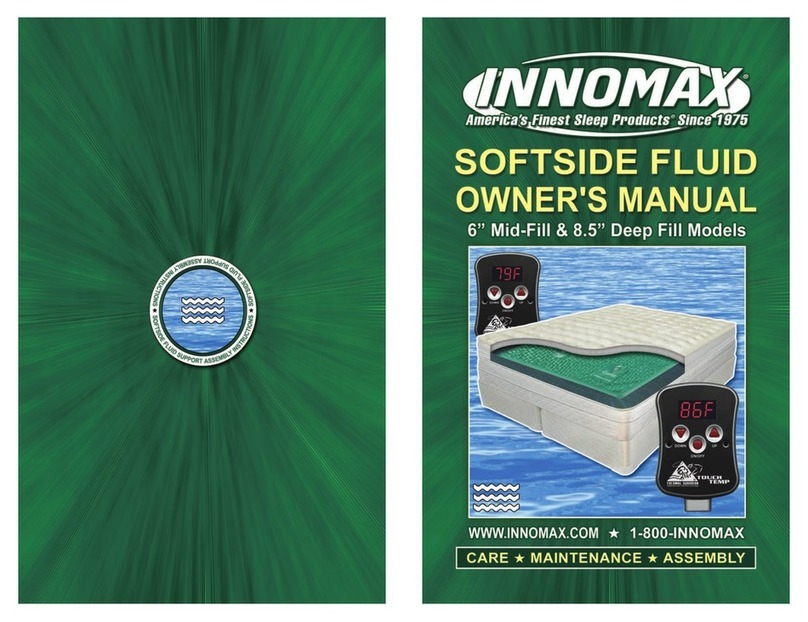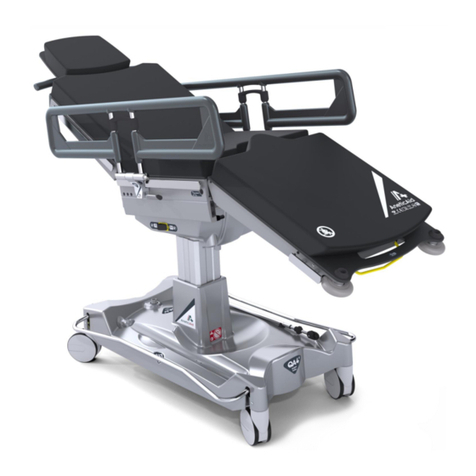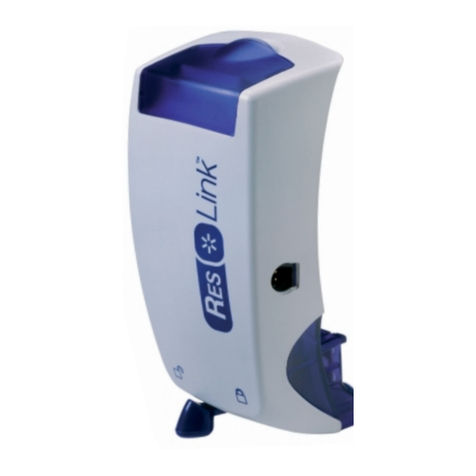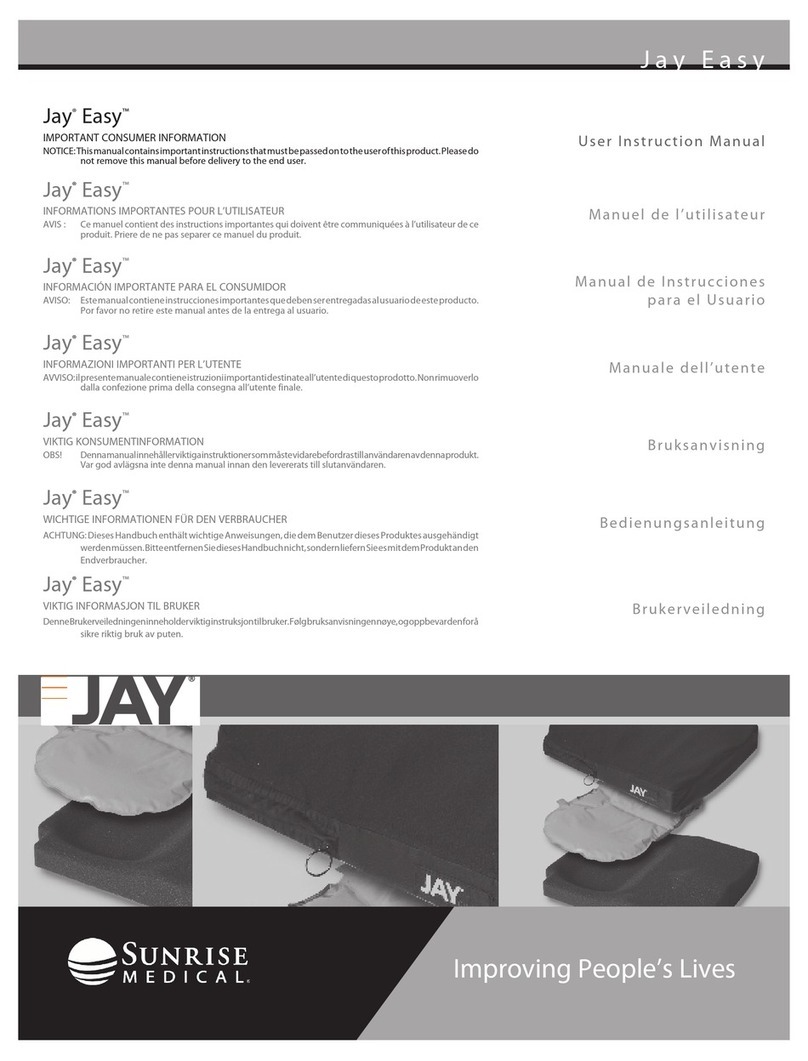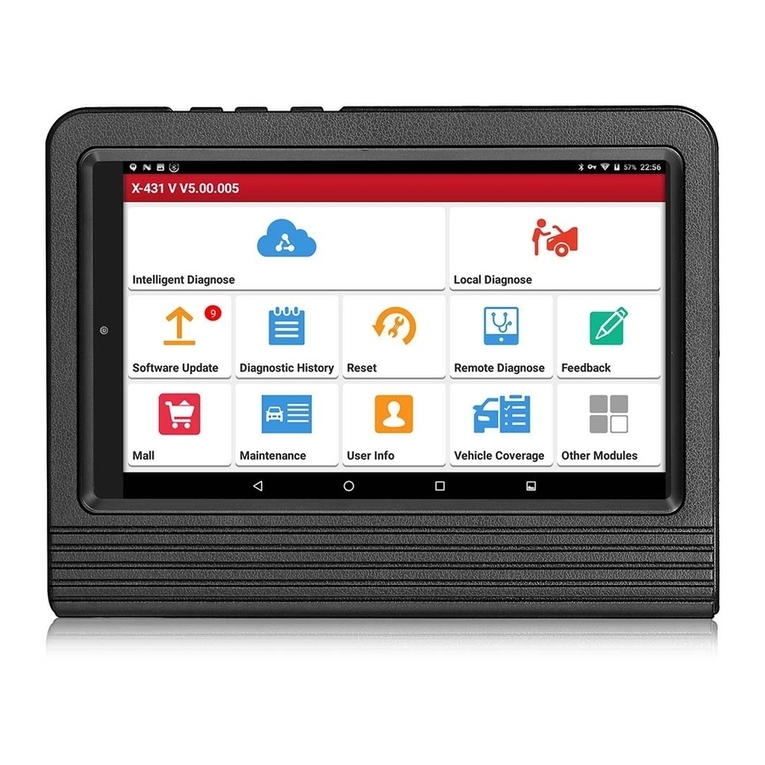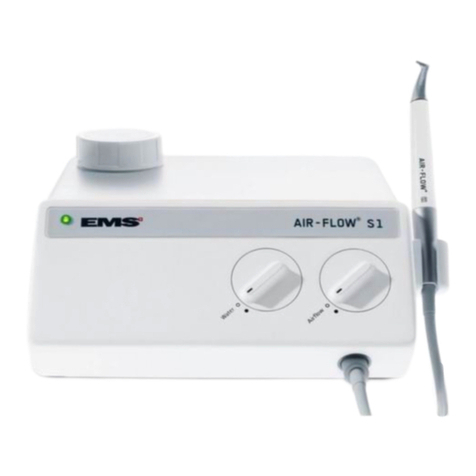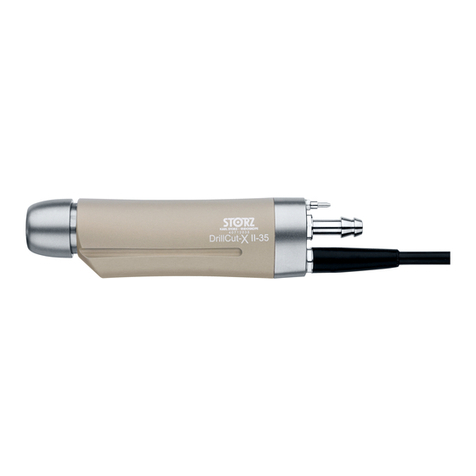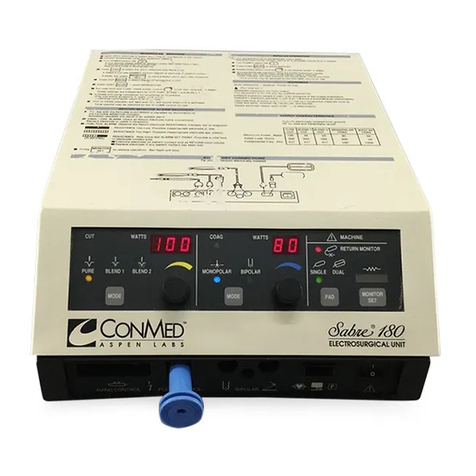Jenx WHALE User manual

1
WHALE
Instruction For Use
Whale is suitable for most children
with special seating needs.
Whale offers conventional sitting,
(90-90-90), reclined sitting,
tilt-in-space and long leg sitting.
Note: Whale is a Prescribed Medical Device.
To be used only with the guidance of
Therapist or Prescribing Practitioner.
Please read these instructions carefully before use.
All Users
GB
NR15
9 months - 4 years
Max user weight 25 Kg
Section 2 Pages 9 - 19
Technical User - Physiotherapist, Occupational Therapist.
Section 3 Pages 21 - 26
Home User - Home or School Carer.
Section 4 Pages 27 - 31
Re-Issue - Stores Personnel.
FOR FREE ADVICE ON THE USE OF THIS PRODUCT, PLEASE CONTACT OUR SALES SUPPORT TEAM
Jenx Limited, Wardsend Road, Sheffield, S6 1RQ, Tel: +44 (0)114 285 3376 Fax: +44 (0)114 285 3528 in[email protected]om www.jenx.com
Ver; 004 June 09 SJB
Section 1 Pages 2 - 8
All Users - Safety Information

2
IMPORTANT SAFEGUARDS
Any service or repair carried out by persons other than a Jenx authorised service person will
invalidate the guarantee and Jenx can accept no liability for any injury or damage so caused.
NEVER LEAVE CHILD UNATTENDED WHILE THEY ARE USING THIS PRODUCT.
FOR FREE ADVICE ON THE USE OF THIS PRODUCT, PLEASE CONTACT OUR SALES SUPPORT TEAM
Jenx Limited, Wardsend Road, Sheffield, S6 1RQ, Tel: +44 (0)114 285 3376 Fax: +44 (0)114 285 3528 inf[email protected] www.jenx.com
Failure to follow instructions, especially with regard to moving parts may pose a risk to the
user. Always read instructions before use.
Do not use this product if you suspect it is faulty or broken. e.g.
• Hand wheels or clamps not tightening.
• Straps loose or detached.
• Screws Nuts or Bolts loose or missing.
• Damaged Castors.
• Product Structure loose or unstable
Contact Jenx Limited immediately for advice. +44 (0) 114 285 3376
This product should be used on a level floor and never on raised or uneven surface.
Do Not use this product as a Mobility Device.
This product contains small parts which could present a choking hazard to small children.
All Users
GB
All Jenx Limited products are tested to current fire regulations. Always keep products away
from naked flames, cigarettes and sources of heat. E.g. Radiators, Heaters etc.
Ensure your Therapist has signed the inspection log as “Set Up” before using the product.
If this product has not been set up by your Therapist. DO NOT USE THE PRODUCT
A 5MM ‘T’ Bar Allen Key is supplied with this product. The Allen key is supplied for
adjustments to be made by the therapist. Store in a safe place. Keep Away from children.
Do Not make adjustments, other than instructed to do so.
Adjust the Pelvic Strap if needed for change in clothing or size of child. If for some reason
this is not possible, E.g. your child is wearing a spinal jacket, please contact Jenx Limited
for advice. Ensure a fingers width between the belt and the child to prevent over tightening
or the child moving to an inappropriate position.
Assemble product fully before use. Please contact Jenx Limited if you have any problems
at this stage.
Look after your product well, clean regularly and do not use abrasive cleaners.
This product conforms to the European Medical Devices Directive. It has not been tested
in conjunction with other manufacturer’s products. Do not add any accessories other than
Jenx Limited accessories to this product. If in doubt, contact Jenx Limited for advice.
When not in use store, this product in a dry place that is not subject to extremes of
temperature. E.g. Places not to store this product are Attics or garden Sheds.
All belts and harnesses should be used at all times. For therapy purposes it may be
necessary to deviate from this rule and any deviation should be fully documented as part
of a Risk Assessment or Therapy Programme and all relevant staff and carers
appropriately trained. Secure client with straps before adjusting product. Ensure finger’s
width between safety strap and client to prevent over tightening or client moving to
inappropriate position. Adjust straps for each client and changes of clothing. Minimum
Velcro overlap: 3 inches (7.5cm) on all straps. If strap is not long enough, DO NOT USE
PRODUCT

3
Batch number
FOR FREE ADVICE ON THE USE OF THIS PRODUCT, PLEASE CONTACT OUR SALES SUPPORT TEAM
Jenx Limited, Wardsend Road, Sheffield, S6 1RQ, Tel: +44 (0)114 285 3376 Fax: +44 (0)114 285 3528 inf[email protected] www.jenx.com
All Users
GB
SAFETY LABEL
The batch number is written on the fire
label (see picture below) which is
located on the inside of the product
body. Or in some instances on the
underside of the seat. Please quote
this number on all correspondence.
Each Jenx product has a pictorial safety label attached.
Refer to explanation below.
Warning / Attention.
Please read Instructions
Always fasten and adjust positioning straps and belts to suit the
child. Adjust to suit changes in clothing. Allow one fingers width
between the belt and the child.
DO NOT USE as a mobility device
Never use product on rough ground or uneven surface.
Only use indoors
Do not leave child unattended
Conforms to CE Marking Regulations
Medical Devices Directive (MDD) 93/42 EEC
Maximum user weight

4
CARE AND CLEANING INSTRUCTIONS
Fabrics, Vinyl's and Cloth covers
1. Minor spills can be removed with kitchen roll and the area wiped with clean water.
2. Staining should be removed as quickly as possible after contact.
3. Do not rub, rubbing will spread the stain over a larger area and may distort the
surface texture of the fabric.
4. For water based spills such as food, drink and vegetable oils, blot up the spill by
applying pressure with non-coloured paper towels, tissues or dry absorbent cloths.
Soak a small piece of cloth in a solution of mild detergent and warm water (use
cold water for blood), using a small amount of the solution at a time and with a
dabbing or blotting motion, work inwards from the edge of the stain to prevent it
spreading. Do not over wet. Excessive soaking may cause rings on the surface
spreading the stain further and may also damage the fabric or foam.
5. This step may need to be repeated and is dependent on the nature of the stain and
the amount of staining present. Continue treatment until stain is removed, always
remembering to remove excess moisture from the fabric prior to the next
treatment.
6. Rinse by applying clear tepid water using a small piece of non-coloured sponge or
clean white cloth, again working inwards from the edge of the treated area.
7. Disinfectants which do not contain organic solvents may be used according to the
manufacturer’s directions. Antibacterial spray or wipes can be used, be sure to dry
the product before use.
8. Do not soak the fabric.
9. Do not use organic solvents or dry cleaning fluids. Do not use abrasive cleaners.
10. For disinfectant purposes, a small quantity of household bleach diluted with water
(no more than 3% bleach) can be used, take care to rinse with water.
11. Do not use industrial bleaches such as Caustic Soda or Sodium Hypochlorite
12. Always ensure that the product is dry before use.
Wooden Products and Parts
1. For deep cleaning a low pressure Steam Cleaner can be used.
2. Do Not use solvents of any kind to clean Jenx Products.
3. Soap and water or antibacterial spray can be used.
4. Check for breaks or splintering of the wood before re-issuing.
5. Daily cleaning: Spray polish or wax polish can be used.
Metal Frames and Coated Parts.
1. For deep cleaning a low pressure Steam Cleaner can be used.
2. Do Not use solvents of any kind to clean Jenx Products.
3. Soap and water or antibacterial spray can be used.
4. Daily cleaning: wipe framework down with a damp cloth.
All Users
GB
FOR FREE ADVICE ON THE USE OF THIS PRODUCT, PLEASE CONTACT OUR SALES SUPPORT TEAM
Jenx Limited, Wardsend Road, Sheffield, S6 1RQ, Tel: +44 (0)114 285 3376 Fax: +44 (0)114 285 3528 inf[email protected] www.jenx.com

5
MAINTENANCE
Daily Checks of the equipment should be carried out by carers. These checks are
not technical but a basic understanding of the product is needed. Multiple daily
checks may be needed in schools or therapy rooms where the products are used by
multiple users.
Daily Checks
• Replace any lost or worn washers or bolts.
• Check tray for damage. Ensure that the tray edging is secure and that the tray
is clean and free of any rough or sharp corners.
• Check all upholstery for any signs of wear and tear.
• Brush Velcro® to remove fluff.
• Check wooden parts for splitting or splintering.
• Check straps for fraying and missing or broken buckles.
• Clean any stains or spillages.
• Contact Jenx Limited if any accessories not manufactured by Jenx Limited
have been attached to the product. Unauthorised accessories may affect the
safety of this product and invalidate your warranty.
We recommend that on a monthly basis a competent person who is familiar with
this piece of equipment and who has been trained in its use should carry out a more
detailed check
Monthly Checks
• Check all nuts and bolts are secured and that none is missing.
• Check all mechanical movements operate fully.
• Check the structure of the product for signs of fatigue or splintering.
• Castors: Lift base and check each wheel to ensure it is not loose or worn.
Remove any grease or dirt that has built up on the wheels, check that the
brake stops the wheels rotating (where applicable).
• Check gas springs for creep by placing a weight on the chair at the highest
setting, (simulating the child) and leave for 1 hour. If the product has reduced
significantly in height contact our Customer Service Department for advice.
Please ensure the name of the therapist who recommended the equipment is noted
on the check/inspection log, along with the competent person who has been trained
in the use of the equipment. Please also ensure that this is updated for changes in
staff. Please note any “Set up” procedures should always be recorded.
All Users
GB
Do not use this product if you suspect it is faulty or broken.
Contact Jenx Limited immediately for advice. +44 (0) 114 285 3376
FOR FREE ADVICE ON THE USE OF THIS PRODUCT, PLEASE CONTACT OUR SALES SUPPORT TEAM
Jenx Limited, Wardsend Road, Sheffield, S6 1RQ, Tel: +44 (0)114 285 3376 Fax: +44 (0)114 285 3528 inf[email protected] www.jenx.com

6
PRODUCT INDUCTION and HAND OVER
This product is a Prescribed Medical device as such it is important that all users understand the
use and adjustments this product offers. This booklet shows the range of adjustments and gives
guidelines for each type of user to follow.
Technical users
This section refers to Physiotherapist, Occupational Therapist.
Ensure you read all sections in this booklet and are fully familiar with all adjustments.
As well as the selection, prescription and set up of the product to suit the child’s needs.
The technical user has the responsibility for the induction of the Home User or Carer, ensuring
that the Home user has:
• Familiarity with the product. What to use and what not to use.
• Understanding of the care and cleaning procedures.
• Understanding all of the safety aspects of the product.
• Tools issued with Jenx Limited products are for Technical users only, Do Not issue
Home Users with adjustment tooling.
A formal handover procedure should be adopted for this product. Use the recording sheet at the
rear of this booklet to record set ups and changes to the product.
Jenx Limited offer Product Courses for Technical Users please contact us for more information.
Home User
This section refers to Home or School Carer.
This product is a Prescribed Medical device it should only be used with the guidance of a
Physiotherapist or Occupational Therapist.
Do not perform any other adjustment than instructed to do so.
The Home User section of this guide gives the adjustments needed to aid the daily use only.
Any other adjustments are only to be preformed by the therapist.
Do not make any other adjustments that are not included in this Home User Section.
Re-Issue
This section refers to Stores Personnel.
Stores personnel must follow the checks and maintenance guide before re issue. The MHRA
release regular bulletins regarding product updates and issues, these should be regularly
monitored.
• Records should be kept on all products serviced or re-issued. Repairs or replaced parts
should be traceable.
• The batch number identifier should always stay with the product and never be removed.
• Instructions should always be issued with the product. Copies are available from Jenx
limited or can be downloaded from www.jenx.com
• Technical users should always be informed when a product is issued to a home for set up
purposes.
• If the product is to be redelivered ensure adequate and secure packaging is used.
• If in any doubt to the safety of this product do not issue, contact Jenx Limited for advice.
Jenx Limited offer Stores Courses for Stores Personnel. The course gives guidance for:
• Maintenance
• Inspection the products
• Regulatory information
• Cleaning
Please contact us for more information.
All Users
GB
FOR FREE ADVICE ON THE USE OF THIS PRODUCT, PLEASE CONTACT OUR SALES SUPPORT TEAM
Jenx Limited, Wardsend Road, Sheffield, S6 1RQ, Tel: +44 (0)114 285 3376 Fax: +44 (0)114 285 3528 inf[email protected] www.jenx.com

7
SPECIFICATIONS
Descriptions Min Max
Seat width 305 mm 305 mm
Available seat length 155 mm 335 mm
Available seat length with ex-
tension
355 mm 535 mm
Seat length extension 200 mm 200 mm
Lower leg length 110 mm 350 mm
Thoracic width 165 mm 290 mm
Hip width 150 mm 250 mm
Seat to top of armrest 130 mm 240 mm
Armrest to floor 490 mm 760 mm
Seat angle flat 25º
Tray size 580 mm x 315 mm
Size Guide
Max weight of child 25 kg
Overall min height of Whale 825 mm
Overall max height of Whale 1030 mm
Product weight 25 kg
Max floor space required 820 mm x 630 mm
Boxed weight 30 Kg
Foot print 620 mm x 590 mm
All Users
GB
FOR FREE ADVICE ON THE USE OF THIS PRODUCT, PLEASE CONTACT OUR SALES SUPPORT TEAM
Jenx Limited, Wardsend Road, Sheffield, S6 1RQ, Tel: +44 (0)114 285 3376 Fax: +44 (0)114 285 3528 inf[email protected] www.jenx.com

8
WARRANTY
Jenx Limited warrants that the goods manufactured by Jenx
Limited will be free from defects in material and workmanship
for a period of 24 months* from the date of purchase.
Jenx Limited has sole obligation under this warranty to repair
or replace, at our discretion for any part or goods proving
defective within the terms of this period. The buyer must
provide immediate notice of the claimed defect.
Jenx Limited reserves the right to inspect the part or goods at
the buyer’s premises.
In the event of an exchange or return, where a certain model
under this warranty is discontinued, Jenx Limited reserves the
right to replace with a new model of a similar quality and price.
The warranty does not cover the product for repair or
replacement due to failure or damage through; abuse, neglect,
accident, improper repair, exposure to corrosive or abrasive
material, weather, failure to follow care and cleaning
instructions or alterations or modifications carried out by any
person other than a Jenx Limited authorised person.
*For purchases placed on or after the 1st January 2006. Previous purchases will have 12 month warranty
from date of purchase
All Users
GB
FOR FREE ADVICE ON THE USE OF THIS PRODUCT, PLEASE CONTACT OUR SALES SUPPORT TEAM
Jenx Limited, Wardsend Road, Sheffield, S6 1RQ, Tel: +44 (0)114 285 3376 Fax: +44 (0)114 285 3528 inf[email protected] www.jenx.com

9
Whale is suitable for most children
with special seating needs.
Whale offers conventional sitting
(90-90-90), reclined sitting,
tilt-in-space and long leg sitting.
Technical User
GB
NR15
9 months - 4 years
Max weight 25 Kg
Read the All User Section first. The adjustments contained in the Red Section
of this booklet should only be carried out by a suitably trained Therapist or
Prescribing Practitioner.
Note: Whale is a Prescribed Medical Device.
To be used only with the guidance of Therapist
or Prescribing Practitioner
Please read these instructions carefully before use.
Section 2 Pages 9 - 19
Technical User - Physiotherapist, Occupational Therapist.
Section 3 Pages 21 - 26
Home User - Home or School Carer.
Section 4 Pages 27 - 31
Re-Issue - Stores Personnel.
Section 1 Pages 2 - 8
All Users - Safety Information
FOR FREE ADVICE ON THE USE OF THIS PRODUCT, PLEASE CONTACT OUR SALES SUPPORT TEAM
Jenx Limited, Wardsend Road, Sheffield, S6 1RQ, Tel: +44 (0)114 285 3376 Fax: +44 (0)114 285 3528 info@jenx.com www.jenx.com
WHALE
Instruction For Use

10
1. Multi-grip headrest: This can be adjusted for height, angle, width, depth and can be ‘moulded’ to
the correct shape to support each child using the 5MM Allen key provided
2. Chest strap and thoracic support pads: The chest strap can be adjusted for length and the
thoracic support pads can be adjusted for width and height.
3. 45°pelvic strap: This can be adjusted for length. Note: Always route the strap under the hip pads.
4. Hip support pads: These can be adjusted for width and height.
5. Backrest angle: This can be adjusted to increase or decrease the angle at the hips.
6. Tilt in space: The angle of the chair can be adjusted from a level plane (O°) or tilted backwards
(up to 25°)
7. Arm rests: These can be raised, lowered and adjusted for angle.
8. Footplate and sandals: The footplate can be adjusted for height and the sandals can be adjusted
for width, moved forwards, backwards and rotated.
9. Seat depth: The seat depth can be adjusted to accommodate various leg lengths and also to offer
Long Sitting.
10. Knee cups: These can be adjusted in width and height and be rotated to accommodate
abduction, adduction and windswept hips.
11. Shoulder support pad: This can be raised, lowered or removed completely for very small
children.
Main Areas of Adjustment
11
1
5
6
7
9
8
2
10
3 4
5
9
View from rear of Whale
View from front of Whale
Secure the child by using the 45° pelvic strap before you begin to make any other adjustments.
Ensure the belt is adjusted for each child and for changes of clothing.
Ensure the straps are routed under the hip pads. Ensure a fingers width between the belt and the
child to prevent over tightening or the child moving to an inappropriate position.
Technical User
GB
Never remove the headrest from Whale
Do not use this product if you suspect it is faulty or broken.
Contact Jenx Limited immediately for advice. +44 (0) 114 285 3376
Never Leave your child unattended while using this product
FOR FREE ADVICE ON THE USE OF THIS PRODUCT, PLEASE CONTACT OUR SALES SUPPORT TEAM
Jenx Limited, Wardsend Road, Sheffield, S6 1RQ, Tel: +44 (0)114 285 3376 Fax: +44 (0)114 285 3528 inf[email protected] www.jenx.com

11
Making & Using the Adjustments
POSITIONING SUGGESTIONS GIVEN IN THIS SECTION SHOULD TREATED AS A GUIDE ONLY. YOU
SHOULD ALWAYS CONSULT YOUR THERAPIST OR MEDICAL PRACTITIONER BEFORE USING WHALE.
WHY?
The 45° pelvic strap not only holds the child safely in the seat, but also holds
their hips in place in the back of the seat, giving them a stable base for sit-
ting. The position of the child’s hips is important as it is the base of their
posture. Weight should be evenly distributed on either side and their pelvis
should be level and not rotated.
45° pelvic strap
HOW?
Clip the buckle in the centre of the pelvic strap to secure the child. The pelvic
strap length is altered by opening the swiss locks on the inside of the Whale
fin (fig 1) and pulling the two straps until the right length is achieved. Always
make sure that you pull evenly from both sides so the buckle stays in the
middle of the child. This helps to maintain symmetry. Ensure a fingers width
between the belt and the child to prevent over tightening or the child moving
to an inappropriate position.
Note: Always route this strap under the hip pads
Secure the child by using the 45° pelvic strap before you begin to make any other adjustments.
Ensure the belt is adjusted for each child and for changes of clothing.
Ensure the straps are routed under the hip pads. Ensure a fingers width between the belt and
the child to prevent over tightening or the child moving to an inappropriate position.
View from underside of Whale
Technical User
GB
Fig 3
View from front of Whale
Fig 2
View from rear of Whale
Fig 1
Never remove the headrest from Whale
Do not use this product if you suspect the 45° Pelvic Strap or Thoracic Supports are faulty or broken.
Contact Jenx Limited immediately for advice. +44 (0) 114 285 3376
Never Leave your child unattended while using this product
Chest strap & thoracic support pads
HOW?
To adjust the length of the chest strap, open the Swiss lock (fig 2) on either side of the thoracic supports,
adjust to the desired length and close the Swiss locks. Ensure that the padded section of the chest strap is in
the middle of the child’s chest so that they are supported with pressure in mid-line. This will encourage the
child to sit straight. To adjust the width and height of the thoracic supports loosen the yellow wing nuts on
the back of the chair (fig 3), adjust to the desired width and height and re-tighten.
WHY?
The chest strap and thoracic support pads are designed to hold the child’s body straight whilst sitting. Grav-
ity then helps to develop their bones and their muscle tone. Ensure two fingers space between the thoracic
supports and the child’s armpit and a finger width from the child. Floppy children should be supported by a
combination of thoracic supports and hip supports to keep the spine straight. This helps to prevent the child
sitting with a curved spine.
FOR FREE ADVICE ON THE USE OF THIS PRODUCT, PLEASE CONTACT OUR SALES SUPPORT TEAM
Jenx Limited, Wardsend Road, Sheffield, S6 1RQ, Tel: +44 (0)114 285 3376 Fax: +44 (0)114 285 3528 inf[email protected] www.jenx.com

12
The hip support pads
HOW?
The width and height of the hip support
pads can be adjusted by loosening the
yellow wing nuts on the backrest (fig 5) and
then re-tightening once the desired height
and width has been set. Ensure 45 pelvic
strap is routed under hip support pads
WHY?
With the hips held in a firm position, this,
along with the pelvic strap will help to control
rotation and maintain a good position at the
hips.
WHY?
If the child is using Whale with their knees bent and their feet on the footplate, set seat length to about
2 cm shorter than the thigh length of the child to prevent pressure behind the knee. If the child has
one leg shorter then the other set the seat length for the shorter leg. Check hips are square when one
leg seems shorter than the other as incorrect hip position may be the problem. Very young children
can sit with their legs stretched out if you set the seat to its longest position. This prevents
tightening of the muscles behind knees and provides a stable hip position.
Seat depth adjustment
HOW?
This is the length of the seat from front to back.
To alter the seat depth loosen the 2 black wing
nuts under the seat (fig 4) and pull the seat
forward or push it backwards to determine the
seat depth (femoral length). Re-tighten the wing
nuts.
Fig 4
View from rear of Whale
View from rear of Whale
Fig 5
Technical User
GB
Making & Using the Adjustments
Never remove the headrest from Whale
Do not use this product if you suspect that the Seat Depth Adjustment or the the Hip Support Pads are faulty
or broken. Contact Jenx Limited immediately for advice. +44 (0) 114 285 3376
Never Leave your child unattended while using this product
FOR FREE ADVICE ON THE USE OF THIS PRODUCT, PLEASE CONTACT OUR SALES SUPPORT TEAM
Jenx Limited, Wardsend Road, Sheffield, S6 1RQ, Tel: +44 (0)114 285 3376 Fax: +44 (0)114 285 3528 inf[email protected] www.jenx.com

13
The headrest height and angle.
HOW?
To adjust the height of the headrest, loosen the red wing nut on the headrest post (fig 6) and adjust height.
Tighten red wing nut. To angle the headrest or to move it forwards or backwards loosen the two black wing
nuts at the top of the post (fig 7) and adjust to the correct position. To adjust the width or contour of the
headrest, loosen the bolts along the top of the headrest (fig 8) using the Allen Key provided. Re-tighten the
bolts once the desired position is achieved. Only tighten the bolts finger tight.
WHY?
The headrest is used to support the child’s head for activities or for rest. The height adjustment is used to
make sure that the child’s head is upright at a comfortable height, the angle adjustment will ensure the
child’s head is supported in the right position for the activity on offer and the forward and backwards
adjustment means that you can keep the child’s head in line with their body or supported in the best way for
them. The multi-grip “fingers” ( fig 8) are described more fully on the next page, fig 9.
Fig 6 Fig 7 Fig 8
View from rear of Whale View from rear of Whale View from front of Whale
Technical User
GB
Making & Using the Adjustments
WHY?
The headrest should be positioned to support the child’s head. For children with good head control,
straighten out the multi-grips to provide a fairly smooth back surface. Never use the headrest to force a
child’s head into position as this will cause discomfort and can trigger reflexes which will result in poor pos-
ture. The unique Multi-grip™ supports can be moulded to the shape of the child and can be splayed at the
end to support under the child’s chin.
Multi-grip Headrest
HOW?
Using the Allen Key provided loosen the bolts (fig 9)
then use your hands to create the contour you want.
Tighten to finger tight only. These fingers can be re-
contoured as often as you like to vary the support
offered. These “fingers” make it easy to cradle the
child’s head. No other products offer this versatile
option. Take the time to practise with the “fingers”
to create a contour as individual as each child.
View from front of Whale
Fig 9
Never remove the headrest from Whale
Do not use this product if you suspect the Headrest Adjustment or Multigrip Headrest are faulty or broken.
Contact Jenx Limited immediately for advice. +44 (0) 114 285 3376
Never Leave your child unattended while using this product
FOR FREE ADVICE ON THE USE OF THIS PRODUCT, PLEASE CONTACT OUR SALES SUPPORT TEAM
Jenx Limited, Wardsend Road, Sheffield, S6 1RQ, Tel: +44 (0)114 285 3376 Fax: +44 (0)114 285 3528 inf[email protected] www.jenx.com

14
The Shoulder Support Pad
HOW?
Loosen the black wing nut at the back of the pad (fig 10) and
slide the pad to the desired position. If required, the wing nut
and the shoulder support pad can be removed altogether.
WHY?
The shoulder support pad will act as an aid to support the taller child between the backrest and the
headrest or it can be removed altogether if seating a smaller child when the headrest needs to be lowered.
View from rear of Whale
Fig 10
Technical User
GB
Making & Using the Adjustments
Footplate & Sandals
HOW?
The height of the foot plate can be determined by opening the lever at the front of the foot plate (fig 11).
The Insert A shows the lever in the open position. Insert B shows the clamp in the closed position. The posi-
tion of the sandals on the footplate can be adjusted by loosening the wing nut below each sandal (fig 12).
WHY?
Adjust the footplate to support the child’s leg
with the foot flat. The sandals can be moved on
the footplate to hold the child’s feet. The most
common position for feet is directly below the
knees.
Fig 11
Insert A
Insert B
Fig 12
Never remove the headrest from Whale
Do not use this product if you suspect that the Shoulder Pad or Footplate and Sandals are faulty or broken.
Contact Jenx Limited immediately for advice. +44 (0) 114 285 3376
Never Leave your child unattended while using this product
FOR FREE ADVICE ON THE USE OF THIS PRODUCT, PLEASE CONTACT OUR SALES SUPPORT TEAM
Jenx Limited, Wardsend Road, Sheffield, S6 1RQ, Tel: +44 (0)114 285 3376 Fax: +44 (0)114 285 3528 inf[email protected] www.jenx.com

15
Kneecups
HOW?
Always remove the kneecups before placing the child into or removing the child from Whale. Loos-
ening the wing nut below the seat base (fig 13) will allow the knee cups to be removed before plac-
ing or removing the child from Whale. This adjustment will also allow for the Knee cups to be posi-
tioned with the correct amount of pressure on the knees. The wing nuts at the front of each knee
cup (fig 14) can be loosened to allow you to move the knee cups side to side or to turn them around
to offer support to the inside or outside of the child’s knees. The central wing nut (fig 15) can be
loosened to alter the height of the kneecups.
WHY?
Knee cups help to maintain thigh and hip position. Never use knee cups to force the legs back as
this can injure the child’s hips. Knee cups should rest over the knee joint itself. If knee cups are
too low or high they can push the calf or thigh bone only and this will put a strain on the knee
joint.
Fig 13
Fig 14 Fig 15
All viewed from front of Whale
Technical User
GB
Never remove the headrest from Whale
Do not use this product if you suspect the Kneecups are faulty or broken.
Contact Jenx Limited immediately for advice. +44 (0) 114 285 3376
Never Leave your child unattended while using this product
Making & Using the Adjustments
FOR FREE ADVICE ON THE USE OF THIS PRODUCT, PLEASE CONTACT OUR SALES SUPPORT TEAM
Jenx Limited, Wardsend Road, Sheffield, S6 1RQ, Tel: +44 (0)114 285 3376 Fax: +44 (0)114 285 3528 inf[email protected] www.jenx.com

16
Armrest height & angle adjustment
HOW?
Loosening the wing nut (fig 16) allows for the angle of the armrest to be adjusted. The wing nut below the
armrest (fig 17) allows the height to be altered. The grade scale on the arm rest carrier makes it easy to
get the two arm rests at the same height. This is important because the tray fixing requires both arm rests
to be at the same height.
WHY?
Tray position can affect the child’s hand function. Often the best height is waist height but consult your
therapist to choose the best position for the child. You can alter the tray angle to give an inclined surface
or a flat surface even when the chair is tilted.
Attaching the tray
HOW?
Once you have the arm rests to the required height, the
tray fixes by locating the small pins underneath the
tray (fig 18) in one of the holes in the arm rests and
then turning the turn button under the tray to lock in
place. The tray can be fitted closer or further from the
child by locating the pins in holes nearer or further
away from the child.
Technical User
GB
Never remove the headrest from Whale
Do not use this product if you suspect the Arm Rest or Tray are faulty or broken.
Contact Jenx Limited immediately for advice. +44 (0) 114 285 3376
Never Leave your child unattended while using this product
Making & Using the Adjustments
WHY?
The tray gives opportunities for the child to take part in lots of different activities. It also makes feeding
some children much easier as food can be placed on the tray and the tray raised or lowered to make it
easier for the child to feed themselves. The tray can be angled to use for lots of drawing, reading or writing
Clear all items from the tray before adjustment.
Do not use hot or cold drinks on the tray while in the angled position.
Fig 18
Fig 16 Fig 17
FOR FREE ADVICE ON THE USE OF THIS PRODUCT, PLEASE CONTACT OUR SALES SUPPORT TEAM
Jenx Limited, Wardsend Road, Sheffield, S6 1RQ, Tel: +44 (0)114 285 3376 Fax: +44 (0)114 285 3528 inf[email protected] www.jenx.com

17
The backrest angle
HOW?
The backrest angle can be set by loosening the two blue wing nuts (fig 19) and adjusting the angle in the
running slots. Tighten wing nuts.
WHY?
This angle sets the exact position of the child’s hips. To control children who extend strongly, bring the back
forwards to reduce the angle at the hips. This helps to reduce extensor spasm in most children. Opening up
the angle at the hips (reclining) is often used to help a child relax after feeding for example or to offer more
support to a floppy child.
Fig 19
View from rear of Whale
Technical User
GB
Never remove the headrest from Whale
Do not use this product if you suspect the Back Rest or the Tilt in Space are faulty or broken.
Contact Jenx Limited immediately for advice. +44 (0) 114 285 3376
Never Leave your child unattended while using this product
Making & Using the Adjustments
Tilt-in-space
HOW?
To alter the angle of the chair, lift the lever underneath the left side of the
seat and set the chair to the required position (fig 20). Releasing the lever
will lock the chair in that position.
Tilt–in-space keeps the child’s position exactly the same within the chair.
To prevent any unwanted excess movement or jerkiness, guide the whale
to the desired tilt in space position by holding the top of the whale while
operating the lever.
WHY?
By altering the position of the child in space, you can help them to perceive the environment that surrounds
them in different ways and thereby help their cognitive development.
Fig 20
View from underside of Whale
Clear all items from the tray before adjustment.
Do not use hot or cold drinks on the tray while using Tilt in Space.
FOR FREE ADVICE ON THE USE OF THIS PRODUCT, PLEASE CONTACT OUR SALES SUPPORT TEAM
Jenx Limited, Wardsend Road, Sheffield, S6 1RQ, Tel: +44 (0)114 285 3376 Fax: +44 (0)114 285 3528 inf[email protected] www.jenx.com

18
Adjusting the chair height
HOW?
When the chair is empty:
To lower the seat, depress the pedal (fig 21) and push down firmly on the centre of the seat
(fig 22). To raise the seat, simply depress the pedal and the chair will automatically rise.
When the chair is occupied:
To lower the seat hold the handle bars and depress the pedal. Gently guide the chair to the desired
height. If the child is not heavy enough to cause the seat to lower unassisted, apply gentle
pressure to the body of the whale. To raise the seat, simply depress the pedal and the chair will
rise automatically. If this does not happen, simply lift the handle bars gently.
Fig 22
Fig 21
Technical User
GB
Never remove the headrest from Whale
Do not use this product if you suspect the Height Adjustment is faulty or broken.
Contact Jenx Limited immediately for advice. +44 (0) 114 285 3376
Never Leave your child unattended while using this product
Making & Using the Adjustments
Clear all items from the tray before adjustment.
Do not use hot or cold drinks on the tray while changing the position.
FOR FREE ADVICE ON THE USE OF THIS PRODUCT, PLEASE CONTACT OUR SALES SUPPORT TEAM
Jenx Limited, Wardsend Road, Sheffield, S6 1RQ, Tel: +44 (0)114 285 3376 Fax: +44 (0)114 285 3528 inf[email protected] www.jenx.com

19
Optional accessories
The activity frame allows the
parent or therapist to hang
activity equipment over the
surface of the tray in a position
that is easily accessible by the
child.
Activity frame
Abduction roll
Seat extension
Loose covers
The abduction roll can be used
in place of the kneecups. This
soft but firm roll helps to keep
knees apart and prevent
adduction.
This simple seat extension with
abduction block extends the maxi-
mum seat length by 200 mm.
This allows for older children to sit
with their legs extended, helping
to prevent tightening of the knee.
Loose covers for Whale are available in
a number of colours. Washable covers
are available in sets for back, seat and
shoulder pad or seat extension and
abduction block.
Technical User
GB
FOR FREE ADVICE ON THE USE OF THIS PRODUCT, PLEASE CONTACT OUR SALES SUPPORT TEAM
Jenx Limited, Wardsend Road, Sheffield, S6 1RQ, Tel: +44 (0)114 285 3376 Fax: +44 (0)114 285 3528 inf[email protected] www.jenx.com

20
Table of contents
Other Jenx Medical Equipment manuals
